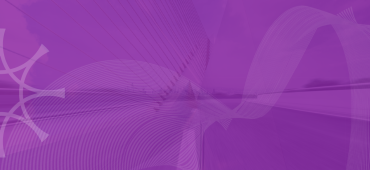Lynx
Canada’s high-value payment system
Lynx is Canada’s high-value payment system, an electronic wire system used by participating financial institutions (FIs) to safely send wire payments on behalf of their customers in Canadian dollars. Based on the real-time gross settlement (RTGS) model, wire payments cleared and settled using Lynx are fast, irrevocable and made with real-time settlement finality. Lynx is also built to support the ISO 20022 financial messaging standard, allowing rich remittance data such as invoice details or purchase information to travel with each payment.
Designated by the Bank of Canada as a systemically important payment system under the Payment Clearing and Settlement Act, Lynx is critical to Canada’s economy. It is used to safely send wire payments and it’s the key mechanism used by the Bank of Canada to implement its monetary policy. Lynx is also used by participating financial institutions to send inter-FI payments. These are payments made from one FI to another to settle amounts owing between them as a result of their customer's activities.
The legal foundation for the system is outlined in Payments Canada’s Lynx By-law and in the Payment Clearing and Settlement Act. To learn more about the development and purpose of Lynx, including the legal and regulatory framework governing its operation, please consult the Lynx primer, An overview of Lynx, Canada’s high-value payment system, developed in collaboration with the Bank of Canada.
Find all Lynx Rules and procedures in the rules and documentation section. Payments Canada systems are operational from Monday to Friday, with the exception of statutory holidays, visit the system closure schedule for details.
Lynx participation
Lynx is designed as an open and accessible system. There are no minimum volume or value requirements for participation. Any financial institution that is a member of Payments Canada can participate in Lynx, provided it meets the following four criteria:
- Maintain a settlement account at the Bank of Canada
- Have the facilities to pledge collateral to the Bank of Canada for Lynx purposes
- Meet certain technical requirements set out in the Lynx rules
- Is a member of Swift
MESSAGE SPECIFICATIONS
Payments Canada has published Lynx ISO 20022 message specifications to support financial institution participants in developing their own ISO 20022-enabled internal systems, so that they can generate and process customer and financial institution wire payments in Lynx. The ISO 20022 message specifications for Lynx and related information are available on Payments Canada’s ISO 20022 resource centre and Swift’s MyStandards web platform.
Key players
There are five key players in the operation of Lynx, each of which plays an important role. Payments Canada, Swift, Lynx participants, the Bank of Canada and the Minister of Finance.
Payments Canada is the owner and operator of Lynx. This involves the daily operation of the system, including but not limited to ensuring the security of the system, keeping the system up to date and compliant with legal requirements, coordinating various participant groups, publishing rules and guidelines, providing ongoing training to participants and improving the system as necessary.
Swift (Society for Worldwide Interbank Financial Telecommunication) is the financial message service provider for Lynx, providing the payment message network over which Lynx participants exchange payment instructions. Swift also monitors the network for payment processing and is responsible for the overall management and maintenance of the standards for payment messages.
Lynx participants are Payments Canada members (financial institutions) who directly participate in Lynx. These include domestic chartered banks, some foreign bank branches and other financial institutions. These direct participants make Lynx payments on behalf of themselves and their customers. Other Payments Canada members who are not direct participants (non-participant partners) arrange Lynx payments for their customers through direct participants.
The Bank of Canada has oversight responsibility for the core payment systems that Payments Canada owns and operates, including Lynx. As a systemically important payment system under the Payment Clearing and Settlement Act, Lynx must observe the Bank of Canada’s Risk Management Standards for designated financial market infrastructure (FMIs).
The Minister of Finance has oversight powers with respect to Payments Canada and payment systems under the Canadian Payments Act. These include general directive powers as well as responsibilities and powers related to by-laws, rules and standards made by the Payments Canada Board of Directors, along with other powers regarding non-Payments Canada payment systems designated under Part 2 of the Canadian Payments Act.
Lynx 2024 statistics
The total volume of payment items includes both items delivered and received through the clearing system.
Wire payments
One of the safest, most efficient ways to move a large amount of money from your account into someone else's is to send a wire payment through your financial institution. Lynx is used to move these funds between participating financial institutions.
To do this, Lynx receives a partial copy of the payment message that includes information about the payment such as: the sending financial institution (where the money is coming from), the receiving financial institution (where the money is going), the date, the amount and some other reference numbers used to route the payment to the customer's account at the receiving institution. This partial copy does not include client information, account numbers or transit numbers.
When sending a wire payment for business or personal matters, it’s important that specific and complete information is provided to the sending financial institution. The receiving financial institution relies on the account number or client number provided by the sending financial institution in order to correctly credit the client account.
To learn more about wire payments, please read our consumer and business wire payment guides.



